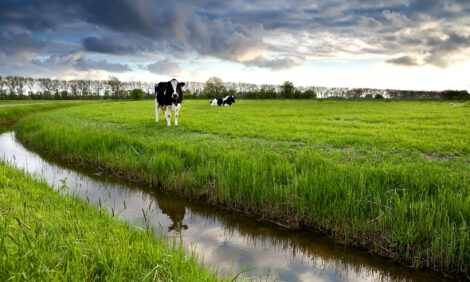



Warm, wet weather heightens parasite risk in sheep and cattle
The latest NADIS1 Parasite Forecast sponsored by Boehringer Ingelheim highlights that the recent warm, wet weather heightens the risk of parasites in sheep and cattle.
Strategic worm control in cattle is usually applied to autumn or winter-born weaned calves in their first grazing season, and in spring-born beef suckler calves in their second grazing season. Wormers should always be administered following the COWS 5 R’s principles – Right product; Right Animal; Right time; Right dose; given in the Right way. [3]
Cattle receiving strategic anthelmintic treatments in the early part of the grazing season should remain on the same pasture for the entire grazing season or be moved to safe pastures e.g. aftermaths, as they become available.
Even low levels of worm infections can reduce growth rate by around 30% in beef calves and replacement dairy heifers [1]. In dairy cows, worm infections can cause a drop in milk yield of 1kg per day [1]. In severe infections, there is ill-thrift, loss of body condition and diarrhoea4.
Ms Timothy says: “Calves in their first grazing season are most at risk of disease, and heavy worm burdens will cause ill-thrift and potentially severe scouring. Not only that, we know that gutworm has a potential impact on future performance, particularly fertility. Sub-clinical growth checks mean heifers take longer to reach target weight for first service, and can take longer to get in calf, with multiple inseminations often required.
“Despite popular misconception, adult cows will become infected by gutworm, though they carry lower worm burdens, shed fewer eggs and don’t show outward signs of disease. However, the effect on productivity is well documented; milk production decreases by at least one litre per day in affected animals and the additional potential for reduced fertility with increased calving to conception ratios reduces overall performance [5].”
Lungworm
Lungworm disease (‘Husk’) can appear from June onwards in unvaccinated calves, cattle without an effective anthelmintic programme, and naïve adult cattle. Adult dairy cattle that have not built up immunity through natural challenge in previous years are also susceptible to lungworm.
Early signs include coughing, initially after exercise then at rest, increased respiratory rate and difficulty in breathing. Affected cattle rapidly lose weight and body condition and should be removed from infected pasture and treated as quickly as possible. Adult dairy cows may show a sudden and dramatic drop in milk yield.
Cattle observed coughing or showing the signs of potential lungworm infection should be investigated by the farm’s vet and prompt treatment with a suitable, fast-acting, zero milk withhold wormer, such as EPRINEX® Pour On may be advised, depending on the diagnosis.
References:
1. NADIS parasite forecast www.nadis.org.uk/parasite-forecast.aspx
2. SCOPS www.scops.org.uk/
3. COWS www.cattleparasites.org.uk
4. Sanchez et al.(2002) The effect of eprinomectin treatment at calving on
reproduction parameters in adult dairy cows in Canada. Preventative Veterinary Medicine 56:165-1
5. McPherson et al. Proceedings of the American Association of Veterinary Parasitologists. 44th Annual Meeting, New Orleans, Louisiana, USA, 1999 Abstr. 28.
| TheCattleSite News Desk | Read more Boehringer Ingelheim News here |


